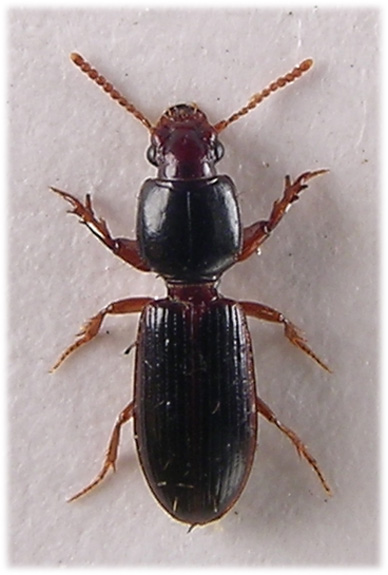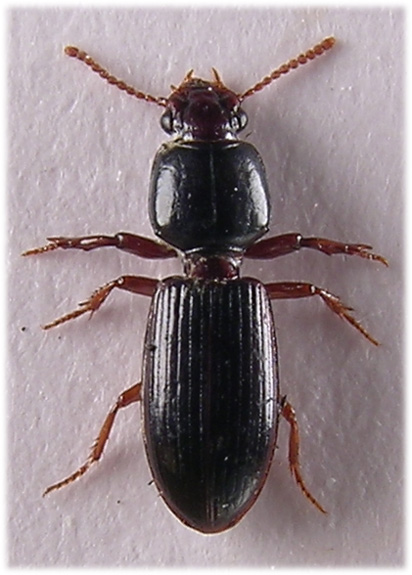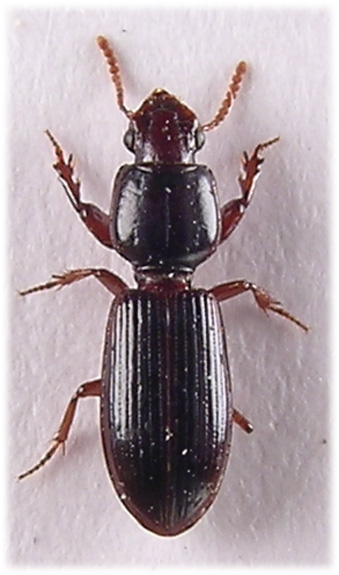
These are very distinctive insects, adapted for digging, with a pedunculate body, short legs, fossorial protibiae and parallel sided form. Some specimens are fully winged but it is thought that flight is rare.
5.5-6.5mm. Elongate and flattened, with a waist (mesothorax) between pronotum and elytra. Glabrous, not metallic. Eyes prominent, frons with central fovea and strong lateral furrows. Head expanded laterally in front of eyes over antennal insertions. Mandibles prominent. Thorax elongate , bordered and with a central furrow. The thoracic muscles are well developed allowing for very powerful soil penetration. Elytral striae strongly punctate, four foveate punctures to third stria. Legs and antennae red, body darker �, suture somtimes pale. Setose along elytral borders and pronotal hind angles. Front femora massive, tibiae fossorial with large apical and subapical teeth. Mid tibia dilated, with large subapical spine and long setae.
� In the other British species C. collaris Herbst, the elytra are much paler than the pronotum and head, a condition also seen in immatture fossor. Smaller 5-5.5mm. always fully winged.
Description from 2 Watford specimens at X20


Home